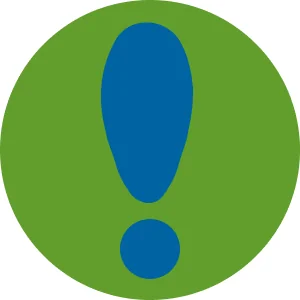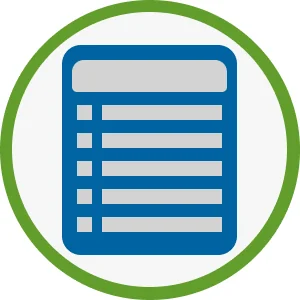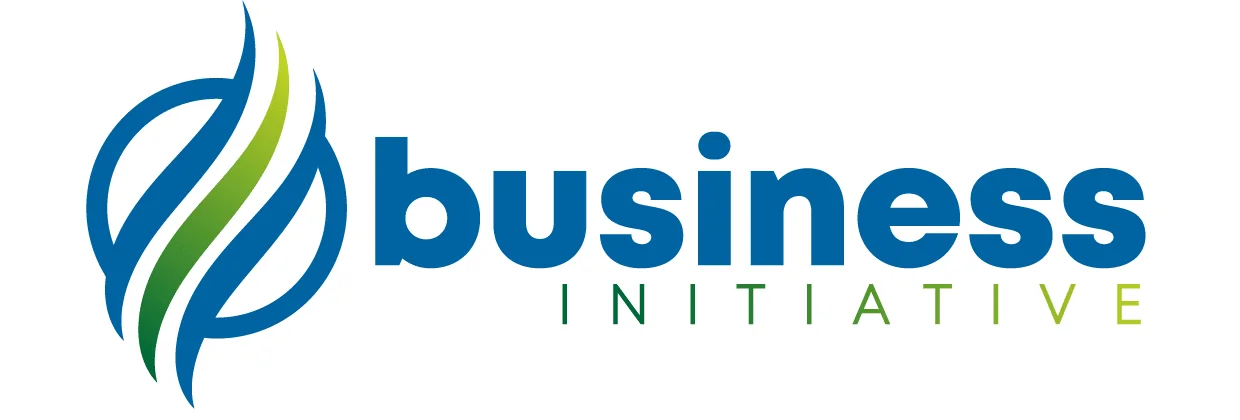Welcome to the Initaitve guide on Pricing Promos, Discounts, their Strategies, Benefits, Pitfalls and Metrics to Consider.
Whether you’re a seasoned business owner or just starting out, understanding how to price your products or services is crucial to your success.
 Key Takeaways
Key Takeaways
- Pricing promotions and discounts can be powerful tools for driving sales growth for businesses of all sizes.
- To create successful campaigns, businesses must understand their target audience and tailor their promotions accordingly.
- The effectiveness of pricing promotions and discounts should be measured using metrics such as customer acquisition cost (CAC), customer lifetime value (CLV), and return on investment (ROI).
- When implementing pricing promotions and discounts, it's important to avoid common pitfalls such as devaluing your product or service and cannibalizing sales.
- By leveraging effective pricing promotions and discounts, businesses can attract new customers, retain existing ones, increase revenue, and ultimately drive growth.
Implementing effective pricing promotions and discounts can help you attract new customers, retain existing ones, and ultimately increase revenue.
In this article, we’ll explore the benefits of different pricing promotions and discounts for businesses of all sizes.
 Table of Contents
Table of Contents
You’ll learn successful strategies, how to measure effectiveness, and how to avoid common mistakes, including over-discounting.
By reading this guide, you’ll gain valuable insights into how pricing promotions and discounts work and how they can drive growth for your business.
So let’s get started!
When and Why to Offer Promotions and Discounts for Your Products and Services
Promotions and discounts can be offered for a variety of reasons, such as to attract new customers, clear out inventory, or reward loyal customers.
They can also be used to create a sense of urgency or incentivize customers to make a purchase.
However, it’s important to offer promotions and discounts strategically and not rely on them too heavily.
Benefits of Offering Promotions and Discounts
Offering promotions and discounts can have several benefits for your business, including:
Increased Sales
Promotions and discounts can be a powerful way to increase sales.
By offering a discount or promotion, customers may be more likely to make a purchase they were previously on the fence about.
This can lead to an increase in overall sales and revenue for your business.
Attracting New Customers
Promotions and discounts can also be used as a tool to attract new customers who may not have otherwise considered your products or services.
By offering an introductory discount or promotion, you can encourage potential customers to give your business a try.
Improving Customer Loyalty
Offering promotions and discounts to existing customers can help improve customer loyalty.
By rewarding their loyalty with exclusive offers or discounts, you show them that you value their business and appreciate their continued support.
Clearing Out Inventory
If you have excess inventory that isn’t selling, offering a promotion or discount can be an effective way to clear it out quickly.
This not only helps free up space in your inventory but also generates revenue that would have been lost if the products had gone unsold.
Creating a Sense of Urgency
Limited-time promotions or discounts create a sense of urgency among customers, encouraging them to take advantage of the offer before it expires.
This can help drive sales in the short term while also creating excitement around your brand.
Overall, offering promotions and discounts strategically can provide significant benefits for your business.
However, it’s important to carefully consider the potential drawbacks and ensure that any promotions or discounts align with your overall business goals.
The Bullwhip Effect and Price Promotions
The bullwhip effect is a phenomenon that occurs in supply chain management, where small fluctuations in consumer demand can cause increasingly larger fluctuations further up the supply chain.
Price promotions or discounts can contribute to the bullwhip effect in several ways.
Increased Demand
When a price promotion is offered, it typically leads to a surge in customer demand for the discounted product.
This increased demand can cause retailers to order more stock from suppliers, who in turn may need to increase production or source additional inventory from manufacturers.
Stockpiling
Customers may take advantage of price promotions by buying more than they need at the discounted price, intending to use or consume the products later.
This behavior leads to a temporary spike in demand followed by a period of lower demand as customers work through their stockpiled inventory.
Order Variability
Businesses might overestimate the impact of a promotion and place large orders with suppliers based on anticipated demand.
If this demand does not materialize as expected, retailers may be left with excess inventory and will likely reduce future orders until their stock levels normalize.
This variability in order quantities contributes to fluctuations throughout the supply chain.
How to eliminate the bullwhip effect of price promotions?
To minimize the bullwhip effect, you should apply the following:
-
Communicate clearly with supply chain partners about anticipated changes in demand
-
Utilize data-driven forecasting tools to make more accurate predictions about customer behavior during promotional periods.
Understanding Price Sensitivity
Price sensitivity refers to how much customers are willing to pay for a product or service.
It is an important factor to consider when implementing pricing promotions and discounts, as it can directly impact the success of these strategies.
By understanding price sensitivity, your business can attract new customers, retain existing ones, increase revenue, and ultimately achieve long-term success in their respective industries.
Price sensitivity can be affected by factors such as brand perception, product quality, and competition. Businesses should take these factors into account when developing pricing strategies and evaluating the effectiveness of promotional campaigns.
How to Measure Price Sensitivity?
There are several methods that businesses can use to measure price sensitivity, including:
-
Gabor-Granger method
-
Conjoint analysis
Each method has its own strengths and weaknesses, and businesses should choose the one that best fits their needs and resources.
Offering Promotions and Discounts Without Negatively Impacting Production or Sales
When offering promotions and discounts, businesses need to ensure that they do not negatively impact production or sales.
One way to achieve this is by carefully planning promotional periods based on anticipated demand and supply chain capacity.
Additionally, businesses should consider setting limits on the number of discounted products that can be purchased per customer.
Another approach is to offer value-added promotions, such as free gifts with purchase or loyalty rewards programs, rather than simply lowering prices.
This can help maintain profitability while still providing incentives for customers to make purchases.
Step-by-Step Guide to Determining the Best Discount Price for Your Product or Service
Offering discounts can be an effective way to attract new customers and boost sales.
However, determining the right discount price can be tricky.
Here is a breakdown of the process you should go through when determining the best discount price for your product or service:
Step 1: Set Your Goals
Before you start planning your discount strategy, it’s important to define your goals.
Are you trying to attract new customers, increase sales volume, or clear out inventory?
Knowing what you want to achieve will help you determine the appropriate discount price.
Step 2: Understand Your Costs
To determine a profitable discount price, you need to understand your costs.
Calculate all of the direct and indirect costs associated with producing and selling your product or service.
This includes factors such as materials, labor, shipping, marketing expenses, and overhead costs.
Step 3: Research Your Competitors
Researching your competitors’ pricing strategies can provide valuable insights into what works in your industry.
Identify their discount prices and compare them to yours.
Determine what makes your product or service unique and how that affects your pricing strategy.
Step 4: Analyze Your Customer Base
Understanding your customer base is crucial when determining the best discount price for your product or service.
Analyze their demographics, purchasing behavior, and price sensitivity.
This information will help you identify which types of discounts are most likely to resonate with different segments of your customer base.
Step 5: Test Different Discount Prices
Once you have gathered all of the necessary information, it’s time to test different discount prices.
Start by offering small discounts and gradually increase them over time until you find the sweet spot that maximizes revenue without sacrificing profitability.
By following these steps, you can determine the best discount price for your product or service that will help achieve your business goals while maintaining profitability.
Examples of Effective Promotions and Discounts
One effective promotion strategy is offering limited-time deals or flash sales.
This creates a sense of urgency and encourages customers to take action quickly.
Another strategy is offering tiered discounts based on the amount spent, which can incentivize larger purchases.
Here are some practical examples of effective promotions and discounts for products and services:
-
Buy-one-get-one-free offers
-
Discounted bundle deals (e.g. buy three products for the price of two)
-
Free shipping promotions
-
Volume discounts (e.g. 10% off orders over $100)
-
Loyalty rewards programs (e.g. earn points for purchases that can be redeemed for discounts or free products)
-
Referral programs (e.g. refer a friend and receive a discount on your next purchase)
-
Seasonal promotions (e.g. holiday sales, back-to-school specials, summer clearance events)
-
Flash sales or limited-time offers
-
Exclusive discounts for email subscribers or social media followers
It’s important to note that not all types of promotions will be equally effective for all businesses or industries.
It’s essential to carefully consider the target audience, product offerings, and other relevant factors when developing promotional strategies.
Additionally, businesses should continuously evaluate the effectiveness of their promotions using metrics such as conversion rates, customer acquisition cost, and overall revenue impact to ensure they are achieving their desired outcomes.
How to Avoid the Negative Effects of Over-Discounting
Over-discounting can lead to a decrease in perceived value and profitability.
To avoid this, businesses can limit the number of promotions offered, ensure that promotions are targeted towards specific customer segments, and use promotions strategically to achieve specific goals.
Over-discounting can have downsides, such as:
-
Decreased perceived value,
-
Reduced profitability,
-
Poor customer loyalty,
-
Lower customer lifetime value
When discounts are offered too frequently or are too large, customers may start to expect them and perceive the regular prices as inflated.
This can lead to a decrease in overall revenue and profitability for the business.
Additionally, over-discounting can attract deal-seeking customers who are unlikely to become repeat customers once the promotion is over.
This can lead to a decrease in customer loyalty and retention.
To avoid these negative effects of over-discounting, businesses can take several steps:
Limit the Number of Promotions Offered
By limiting the number of promotions offered, businesses can help prevent customers from becoming accustomed to discounted prices and expecting them on a regular basis.
This also allows businesses to maintain higher profit margins on products or services that are not discounted.
Target Promotions Towards Specific Customer Segments
Targeting promotions towards specific customer segments helps ensure that only those who are likely to make a purchase will receive the discount.
This prevents deal-seekers from taking advantage of discounts without contributing much to overall revenue.
Use Promotions Strategically
Promotions should be used strategically to achieve specific goals, such as increasing sales volume during slow periods or introducing new products or services.
By carefully planning promotional periods based on anticipated demand and supply chain capacity, businesses can avoid over-discounting while still achieving their desired outcomes.
Utilize Value-Added Promotions
Rather than simply lowering prices, businesses can offer value-added promotions such as free gifts with purchase or loyalty rewards programs.
These types of promotions incentivize customers without sacrificing profit margins. Additionally, they encourage repeat purchases and improve customer retention.
By avoiding over-discounting and using promotions strategically, businesses can attract new customers, retain existing ones, increase revenue, and ultimately achieve long-term success in their respective industries.
Measuring the Success of Promotions and Discounts
To determine the effectiveness of your promotional campaigns, it’s essential to track and analyze specific metrics.
By monitoring these key performance indicators (KPIs), you can make informed decisions about future promotions and discounts.
1. Sales Revenue:
Compare your sales revenue during the promotional period with that of a similar time frame without any promotions.
This will help you understand whether the promotion led to increased sales or simply shifted purchases from one period to another.
2. Average Order Value (AOV):
Analyze the average order value during the promotion compared to a non-promotional period.
If the AOV increases, it indicates that customers are spending more per transaction, which could be a result of an effective promotion strategy.
3. Customer Acquisition Cost (CAC):
/tools/calculator/customer-acquisition-costs/
Evaluate how much it costs to acquire new customers through your promotional efforts by dividing the total marketing expenses by the number of new customers gained during this period.
A lower CAC during promotional periods signifies a successful campaign.
➤ MORE: Use our FREE Customer Acquisition Cost Calculator (CAC)
4. Retention Rate:
Assess if promotions have positively impacted customer loyalty by measuring retention rates before and after implementing discounts or rewards programs.
5. Gross Margin:
Calculate gross margin during promotional periods compared to non-promotional ones to ensure profitability is maintained while offering discounts.
6. Conversion Rate:
Monitor changes in conversion rates for your website or store during promotions and discounts, as higher conversion rates indicate that more visitors are turning into customers due to attractive offers.
➤ MORE: Try Business Initiative's FREE Lead-to-Sale Conversion Rate
By regularly tracking these KPIs, you can evaluate the success of your promotional strategies and make data-driven decisions for future campaigns, ensuring long-term profitability and growth.
In Summary…
Knowing about price sensitivity and determining the best discount price for a product or service are crucial steps in developing effective pricing strategies and promotional campaigns.
By measuring price sensitivity, researching competitors’ pricing strategies, analyzing customer behavior, and testing different discount prices, you can identify the optimal discount price that achieves their goals while maintaining profitability.
It’s important to avoid over-discounting by limiting the number of promotions offered, targeting promotions towards specific customer segments, using promotions strategically to achieve specific goals, and utilizing value-added promotions.
By doing so, businesses can attract new customers, retain existing ones, increase revenue, and ultimately achieve long-term success in their respective industries.
To apply this information in a practical sense, you should evaluate your business’s current pricing strategies and promotional campaigns using the KPIs mentioned above.
By regularly tracking these metrics and making data-driven decisions for future campaigns, entrepreneurs can ensure long-term profitability and growth.
If it’s measureable, it’s managable.
If you need help implementing these strategies or want to learn more about our services, please schedule a consultation call with Business Initiative or use our contact form.
Don’t forget to subscribe to our newsletter and follow us on Twitter for more insights into business strategy and management.


